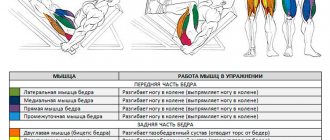What is maltodextrin obtained from?
It is produced from corn, potatoes, rice or wheat by enzymatic breakdown of plant starch. At the same time, the resulting product has a very high glycemic index - from 107 to 135.
The most popular is maltodextrin, derived from corn starch. However, potato is not much inferior to it in its beneficial properties.
As for wheat maltodextrin, it is contraindicated for people suffering from gluten intolerance. Gluten is found in wheat, barley, oats and other grains. It is for this reason that in some countries, for example, in the USA and Canada, corn maltodextrin is mainly produced.
The main producing countries of maltodextrin are England, USA, France and China.
Composite energy chain
One of the distinctive features of maltodextrins is their differing carbohydrate composition. The carbohydrate composition of maltodextrins consists of the following 3 groups of sugars:
- Glucose
- Maltose
- Poly- and -oligosaccharides;
The main characteristic of various maltodextrins is Dextrose Equivalent (DE). Dextrose equivalent (DE) is a relative value that determines the reducing power of maltodextrin/glucose syrup, expressed in grams of D-Glucose (dextrose) per 100 g of dry matter.
D-Glucose by definition has a DE of 100. Generally speaking, maltodextrin is a product of partial hydrolysis of starch and the dextrose equivalent shows the degree of breakdown of starch and the amount of dextrose released.
Maltodextrin in everyday life
Maltodextrin is an easily digestible organic substance, a simple sweetener and thickener, a close relative of starch and glucose.
It is part of many food products that we constantly find in stores - all kinds of yoghurts, puddings, seasonings and sauces, salad dressings, baked goods and confectionery products, chips, ice cream, chocolate bars and even sausages. In addition, maltodextrin is often added to baby food: cereals and milk formulas.
It is also widely used in cosmetology as a component of many creams: it helps maintain their texture and prevents separation. In addition, it has protective properties and increases skin elasticity. Maltodextrin is also used in the pharmaceutical industry to sweeten certain medications and improve their absorption.
Digestion
Maltodextrin promotes the growth of beneficial microflora in the intestines, which can be considered the prevention of dysbacteriosis. The results of a study conducted by Spanish scientists in 2016 were published in the European Journal of Nutrition. They found the beneficial effects of maltodextrin on overall digestion and on improving bowel function.1
Maltodextrin in sports nutrition
In sports nutrition, maltodextrin is found both as an independent drug, acting as a source of concentrated carbohydrates, and as an auxiliary substance included in certain sports supplements. It is mainly included in products from the line for gaining muscle mass, in particular gainers, as it is a source of fast calories.
Maltodestrin has a high caloric content, while the rate of its breakdown is relatively low. Therefore, it allows you to maintain a normal level of glucose in the athlete’s blood for a long period of time, while preventing a sharp increase in the level of glucose in the blood, and therefore preventing the deposition of fat.
Maltodextrin taken after exercise is a good source of glucose and helps restore muscle and liver glycogen stores used up during exercise.
Maltodextrin does not require as much water to digest as some other carbohydrates, so it provides quick calories without the risk of dehydration. Some studies also show that taking maltodextrin may help maintain anaerobic energy during exercise.2
Research has shown that maltodextrin combined with vitamin B6 increases glucose as fuel during exercise.3
A number of tests and studies were carried out with maltodextrin, as a result of which it was officially approved by the scientific community as a substance that helps quickly and effectively replenish the strength and energy of athletes. Maltodextrin is not a doping drug and is approved for use.
What is it used for?
Maltodextrin - this complex carbohydrate is not a food additive (category E), which allows it to be classified as a food product.
In product formulations where it is present, it may also appear under other names, such as:
- syrup;
- glucose;
- grape or starch sugar;
- dextrose;
- dextrin maltose.
Maltodextrin is used in several areas:
- Cooking . It has a wide range of applications, described below.
- Pharmacology . Used as a prebiotic, as an inert excipient, to sweeten some drugs.
- Cosmetics. It is used to increase viscosity and increase shelf life in the production of shampoos, gels, and creams.
- Sports nutrition. Maltodextrin is a powerful source of carbohydrates.
- Another option for using maltodextrin is to spray it with a solution of fruits and berries, which protects them from pests, maintains freshness, and ensures presentation during storage and transportation.
Maltodextrin combined with creatine
Maltodextrin plus creatine is one of the best combinations for increasing the effectiveness of your workout. A professor at one of the American universities in Nebraska conducted numerous studies that showed that the training results of athletes increase by almost 35 percent when using creatine along with maltodextrin, compared to the results obtained when using creatine alone. This means that maltodextrin significantly enhances the effect of creatine.
Moreover, being a concentrated carbohydrate, maltodextrin promotes better absorption of creatine. Incredibly, when taking maltodextrin in combination with creatine, training results improve even in those athletes whose bodies did not react to pure creatine!
When to use it?
1. As soon as you wake up - in some cases, it may seem that the best way to consume fast carbohydrates is in the morning after a few hours of sleep. In this case, maltodextrin will give you enough energy to perk you up and you can start your day full of energy.
2. Immediately before training – exercising after a hard day at work is not easy. You probably took a pre-workout stimulant 30 minutes before your workout, but when you were ready to workout, you still didn't feel any encouraging effects. This may be because your body has become accustomed to the dose you have consumed up to this point. Now you have three options - either increase the dosage of the product, replace the product, or take maltodextrin as a source of additional energy.
3. During long training sessions (such as marathons), maltodextrin is an excellent choice for providing the body with energy without feeling dehydrated . It speeds up regeneration between exercises , allowing you to train more intensely. [3]
4. Post-Workout – The main reason for consuming carbohydrates after a workout is to replenish burned muscle glycogen . During exercise, the main source of energy is muscle glycogen. Glycogen comes in the form of glucose, which consists of long chains of glucose molecules with many branches. Glucose breaks the glycogen chain as needed to generate ATP, which carries chemical energy and is important for muscle contraction. Research confirms that the best way to replenish glycogen stores after exercise is to consume high-glycemic carbohydrates as soon as possible. This is one reason why some workout drinks contain dextrose ( the stimulating sugar maltodextrin).
Studies of glycogen utilization during exercise have shown that a workout of 6-20 sets that lasts about 15-30 minutes damages muscle glycogen levels by about 30-40% . If a high intensity workout lasts 60-90 minutes, such as with Tabata , muscle glycogen levels will be damaged by 60-75% .
For what?
For what purpose do manufacturers add maltodextrin to foods and sports nutrition?
- As an organic thickener. It is often used as a replacement for starch, since it is more easily absorbed by the body and practically does not cause allergies;
- To improve the taste and structure of food;
- To increase the shelf life of products, i.e. as a preservative;
- As a leavening agent;
- To increase the degree of solubility of sports supplements and mixtures;
- To increase the calorie content of foods.
What is the correct ratio of maltodextrin to protein after exercise?
There is no “correct” ratio to follow when mixing these products. Your weight, training intensity and goal are the three main factors that play a role in this case. In general, 0.31 g of maltodextrin per 1 kg of body weight as the optimal amount if weight loss is your goal. To increase muscle mass you need 0.625 g per 1 kg of your own weight.
Maltodextrin and protein should be in a ratio of 2:1 when gaining muscle mass and 1:1 if you are losing weight. This means that if you weigh 70kg and want to gain weight, you need to take 43.75g of maltodextrin and about 21g of protein. Conversely, you will need 21g of maltodextrin mixed with 21g of protein if you want to lose weight. It's important to take this recovery drink within 30 minutes of your workout, followed by a good meal.
Who is not recommended to use maltodextrin?
Maltodextrin is not only safe, but also beneficial for the vast majority of people. However, as always, there are exceptions to any rule.
As mentioned above, maltodextrin, obtained from wheat starch, should not be consumed by people suffering from gluten intolerance. Corn and potato maltodextrin do not contain gluten, which means they can be consumed by people suffering from celiac disease.
Remember that maltodextrin is a fast carbohydrate. Due to its sweet taste, it is often used instead of sugar, indicating in the product composition that it “does not contain sugar.” But the fact is that maltodextrin, like sugar, increases the concentration of glucose in the blood, which is safe for a healthy person, but can have a detrimental effect on the health of those whose blood sugar levels exceed the norm.
Possible harm and side effects
The negative properties of the product include:
- presence of a high glycemic index;
- negative impact on the intestinal microflora, increasing its vulnerability to infections;
- promotes excess weight gain;
- lack of nutritional value;
- It is possible that a product may be produced from raw materials containing GMOs.
There are 4 side effects that are often observed with regular use of maltodextrin as a dietary supplement:
- Having a high glycemic index, carbohydrates can cause a sharp rise in blood sugar. Easily absorbed and quickly enters the bloodstream. Dangerous for people with a predisposition to diabetes or insulin resistance. So-called reverse hypoglycemia is possible, which is expressed in a sharp decrease in blood sugar.
- May affect gut bacterial composition, negatively affecting the growth of beneficial probiotics, which can result in flatulence and bloating due to increased bacterial activity. Promotes the survival of salmonella, which in turn can lead to a number of chronic inflammatory diseases and increase autoimmune disorders in the body.
- Allergic reactions may occur. Thus, studies have confirmed that the use of maltodextrin can provoke a number of gastrointestinal problems, such as gas formation, seething, and diarrhea. Allergic skin irritations have been observed. Manufacturers of the substance assure that maltodextrin cannot contain gluten and corn gluten, because during grain processing, starch and proteins are completely separated, therefore, in the production of maltodextrin, starch devoid of protein impurities is used. However, experts are confident that we can only talk about reducing the gluten content in the produced product, but not about its complete absence.
- Weight gain. This factor is due to the fact that maltodextrin has the same effect on the body as regular sugar, having a high glycemic index, with an almost complete absence of nutrients in its composition, a complex carbohydrate contributes to the deposition of fat deposits.
Don't miss the most popular article in the section: Fashionable haircut for medium hair. Photo, front and back views.
Maltodextrin during pregnancy and lactation
Pregnant and lactating women can also use maltodextrin if they do not have individual intolerance to its components.
However, during pregnancy it is recommended to refrain from excessive consumption of products that contain maltodextrin, as they can lead to increased weight gain in people who do not lead an active lifestyle.
Of course, during pregnancy there is no need to consume maltodextrin in its pure form, however, avoiding products containing maltodextrin does not make any rational sense. After all, in moderation, molasses is good for health.
Top 5 best maltodextrin substitutes
If you have problems with sugar and excess weight, it makes sense to exclude from consumption foods containing complex multicomponent carbohydrates, such as maltodextrin, and try to replace them with more natural and healthy analogues.
These may include the following products:
- Stevia. This natural sweetener is made from the leaves of the plant of the same name. There are three varieties of the product on the market: green leaf, extract, modified stevia. The most natural product, less susceptible to processing than others, is green leaf.
- Pectin. A natural product obtained primarily from fruits (apples, pears, plums, citrus fruits), as well as vegetables and seeds. Used as a thickener, stabilizer, gelling component. It has a high fiber content, which has a positive effect on the digestive system. Binds and removes cholesterol, fats and toxins from the body.
- Guar gum. It is obtained by extracting the seeds of the guar leguminous crop (pea tree), growing in India. Used as a thickener. It has the peculiarity of slowing down the absorption of glucose, which is a positive thing for people with high cholesterol levels and a tendency to diabetes.
- Honey. Fresh honey that has not been filtered or pasteurized is especially valuable. It is highly digestible and contains a high percentage of natural sugars. Positively affects the immune system, increasing the level of antioxidants in the body.
- Dates. Rich in microelements (potassium, copper, magnesium, iron, manganese) and vitamin B6. Promote more complete absorption of proteins, carbohydrates and fats.
Experts in nutrition and medicine note that it is impossible to have an unambiguous attitude towards a substance such as maltodextrin; this would be a mistake. Obviously, it can have both positive and negative effects on the body, depending on the method of consumption, additional nutritional ingredients, the state of human health and many other factors.
Article design: Svetlana Ovsyanikova
Alternative
If you want to add more sweetness to your dish, it is not necessary to use regular sugar or a sweetener. There are a number of natural ways to sweeten a dish without the risk of unwanted consequences.
Here are just a few of them:
- Stevia. Stevia is a natural sweetener that is obtained from a plant in the Asteraceae family. This “sweet plant” has been used for thousands of years. Stevia is one of the best alternatives for diabetics. It's great for baking, but don't forget that this plant is almost 200 times sweeter than sugar, so remember to use moderation.
- Raw honey Raw honey is rich in enzymes, antioxidants, vitamins and minerals. One tablespoon of this honey contains about 64 calories. Its glycemic index is lower than that of banana. Raw honey is not suitable for cooking, but can be added to yogurt, salad, cereal or spread on toast for extra sweetness.
- Maple syrup. Maple syrup contains 24 different types of antioxidants. It is a rich source of manganese, calcium, potassium and zinc. Unlike sucralose, maple syrup is heat stable and can be used in cookies, pies, pancakes, and frostings. Choose 100-proof grade B or C organic maple syrup.
- Coconut sugar. Coconut sugar is obtained from the dried sap of the coconut palm. It contains small amounts of vitamins and minerals. Coconut sugar also contains short-chain fatty acids, polyphenols, antioxidants and fiber. It can be used in any dishes instead of regular sugar.
- Molasses. Black molasses is made from raw cane sugar. Raw sugar is boiled until it turns into a thick, sweet syrup. Unlike regular table sugar, black molasses is very nutritious. It has been proven to contain more phenolic compounds and have higher antioxidant activity than refined sugar, rapeseed honey and dates. It can be combined with coconut sugar.
- What is sucralose and why is it dangerous? Sucralose is a chlorinated derivative of sucrose that is used as a calorie-free sugar substitute. Research shows it may be hazardous to health.
- Today, the most popular product in the world containing sucralose is the sweetener Splenda. This product is approximately 600 times sweeter than sugar.
- In addition to being a sweetener, sucralose is used in food and beverage products, including diet sodas, iced tea, ice cream, popsicles, yogurts, baked goods, chewing gum, candy, and protein bars.
- A recent study concluded that consuming sucralose has a number of side effects: it can lead to the development of diabetes
- increases the risk of IBS and Crohn's disease
- may cause leaky gut
- produces toxic and carcinogenic compounds when heated
- may promote weight gain
You can make an appointment with an oncologist on our website.
Is she safe?
Not really. Sucralose can cause many problems: metabolic syndrome, digestive problems and weight gain. It may not have the best effect on your body.
Side effects caused by consuming sucralose include:
- changes in glucose and insulin levels
- increased risk of digestive problems
- changes in gut health and damage to the gastrointestinal tract
- death of probiotics
- may influence the development of certain types of cancer
- formation of toxic components when heated
- possible weight gain











